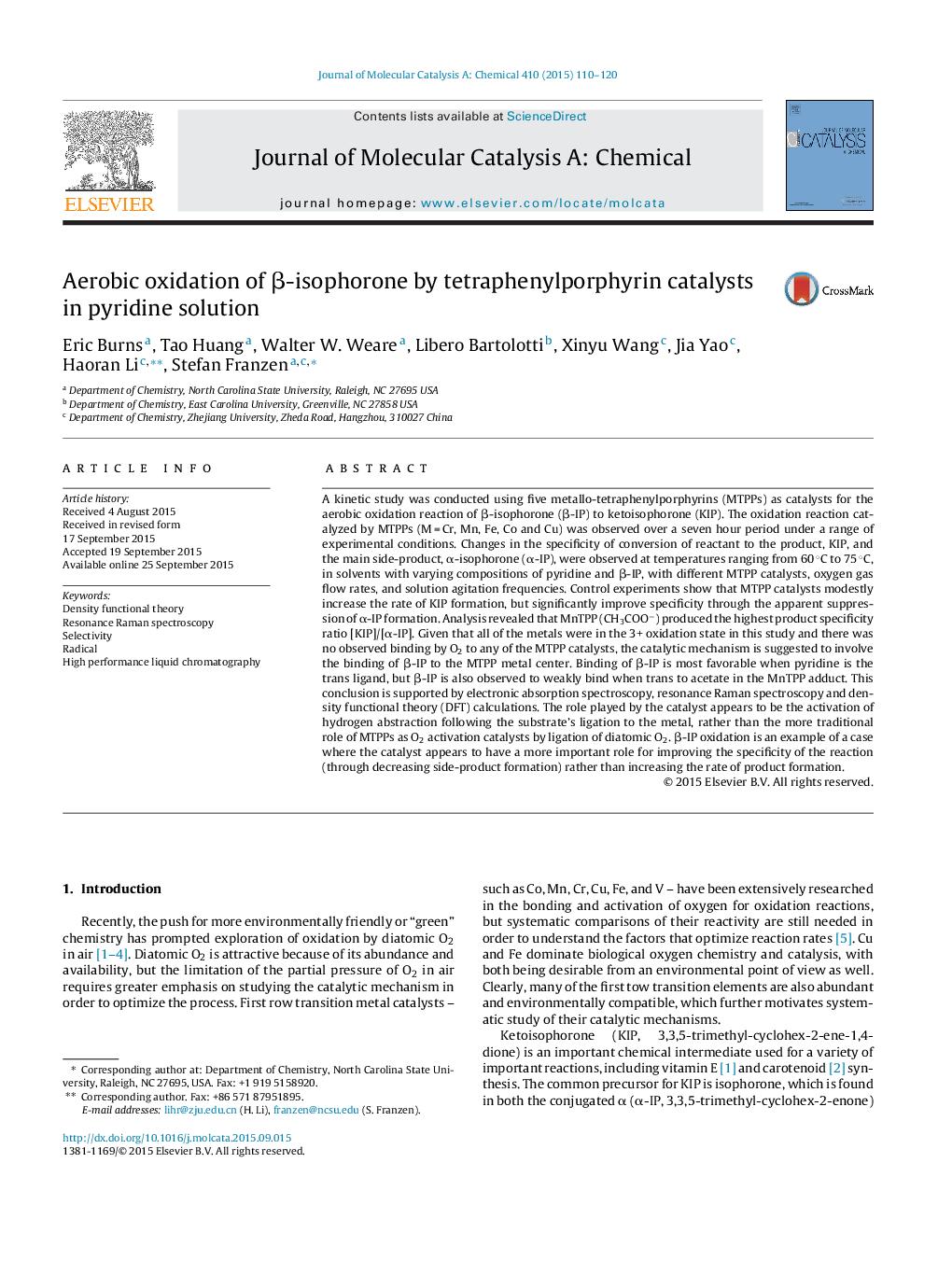| کد مقاله | کد نشریه | سال انتشار | مقاله انگلیسی | نسخه تمام متن |
|---|---|---|---|---|
| 64833 | 48372 | 2015 | 11 صفحه PDF | دانلود رایگان |

• Oxidative catalysis of β-IP is mainly based on selectivity of KIP over α-IP formation.
• MnTPP is by far the best catalyst using the selectivity criterion.
• The mechanism cannot involve oxygen activation by the metal center.
• Ligation of β-IP to the Mn in MnTPP is consistent with results.
• DFT calculations strongly support spectroscopic and kinetic data for this mechanism.
A kinetic study was conducted using five metallo-tetraphenylporphyrins (MTPPs) as catalysts for the aerobic oxidation reaction of β-isophorone (β-IP) to ketoisophorone (KIP). The oxidation reaction catalyzed by MTPPs (M = Cr, Mn, Fe, Co and Cu) was observed over a seven hour period under a range of experimental conditions. Changes in the specificity of conversion of reactant to the product, KIP, and the main side-product, α-isophorone (α-IP), were observed at temperatures ranging from 60 °C to 75 °C, in solvents with varying compositions of pyridine and β-IP, with different MTPP catalysts, oxygen gas flow rates, and solution agitation frequencies. Control experiments show that MTPP catalysts modestly increase the rate of KIP formation, but significantly improve specificity through the apparent suppression of α-IP formation. Analysis revealed that MnTPP (CH3COO−) produced the highest product specificity ratio [KIP]/[α-IP]. Given that all of the metals were in the 3+ oxidation state in this study and there was no observed binding by O2 to any of the MTPP catalysts, the catalytic mechanism is suggested to involve the binding of β-IP to the MTPP metal center. Binding of β-IP is most favorable when pyridine is the trans ligand, but β-IP is also observed to weakly bind when trans to acetate in the MnTPP adduct. This conclusion is supported by electronic absorption spectroscopy, resonance Raman spectroscopy and density functional theory (DFT) calculations. The role played by the catalyst appears to be the activation of hydrogen abstraction following the substrate's ligation to the metal, rather than the more traditional role of MTPPs as O2 activation catalysts by ligation of diatomic O2. β-IP oxidation is an example of a case where the catalyst appears to have a more important role for improving the specificity of the reaction (through decreasing side-product formation) rather than increasing the rate of product formation.
Figure optionsDownload high-quality image (113 K)Download as PowerPoint slide
Journal: Journal of Molecular Catalysis A: Chemical - Volume 410, 15 December 2015, Pages 110–120